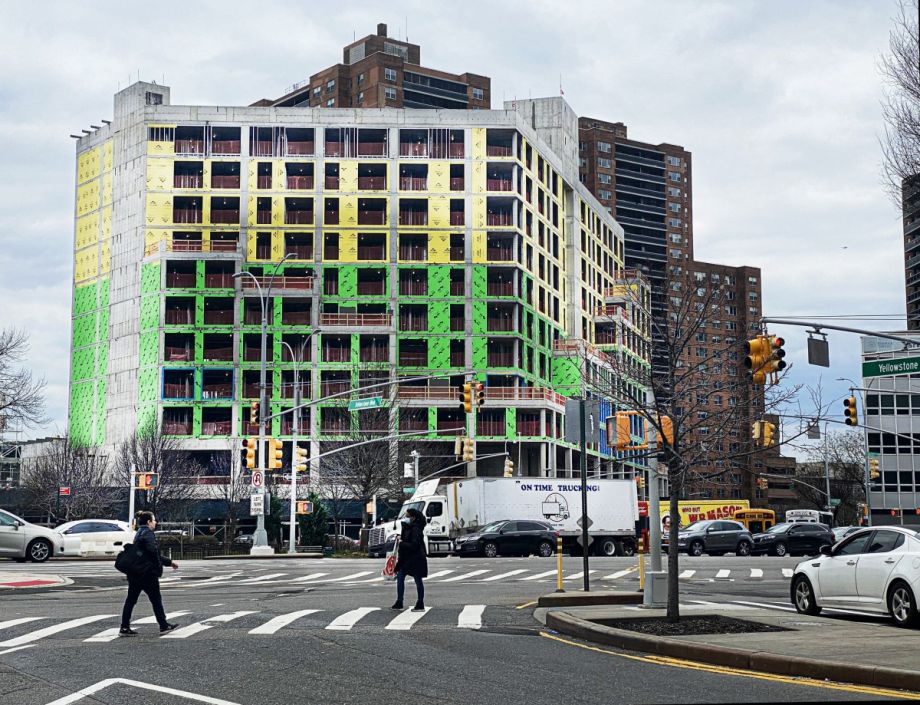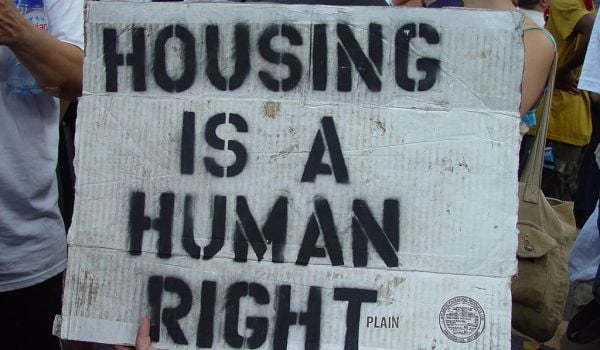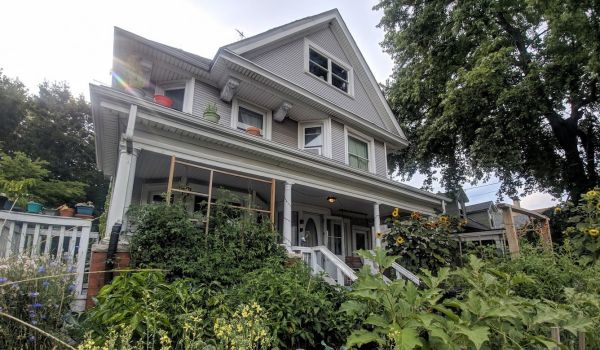Biden Administration Will Use Executive Action To Boost Housing Construction
The White House released a suite of new policies on Monday intended to increase the supply of housing across the country within five years. While sweeping housing investments were included in the since-derailed Build Back Better Act, the administration is now leaning on the president’s executive authority to spur housing in other ways.
The plan will encourage localities to change zoning laws in favor of more density, spurring trends that a wave of jurisdictions have been pursuing on their own in recent years. It will also offer more lending options for the creation and rehabilitation of single-family homes, as well as accessory dwelling units and “manufactured and modular” housing.
To spur zoning changes, the administration will use the power of the purse: The administration will prioritize competitive grants — approved in last year’s federal infrastructure bill — for places with land-use policies that promote density. It will likewise target competitive economic development grants toward proposals that would increase housing density.
The administration will also change its rules for awarding Low-Income Housing Tax Credits, which are how most new affordable housing is financed. Rather than mandating that every household meet the government’s income threshold, it will require that all households in a LIHTC-financed building average out to the government’s affordability threshold, typically 80% of area median income. The administration believes this will spur more housing construction and lead to more mixed-income development in rural areas.
The administration will also take on the trend of large private investors purchasing single-family homes, a practice that accounted for nearly 27% of all home purchases in September 2021 according to CoreLogic. The administration says it will extend the window in which foreclosed properties under its ownership are only available to purchase by nonprofits to 30 days. It also will set a goal of selling 50% of federally owned homes to owner-occupants and nonprofits.
The administration will also identify buildings in its possession to be used as housing for people experiencing homelessness, but says only a “small percentage” are suitable for this purpose.
The Shrinking Geography of Affordability
The number of zip codes where the median rent was affordable to low-income households — defined as a household making 80% of the area median income — shrunk by 50% between 2013-2019. That was among the findings of a new report produced by the National Equity Atlas, a combined effort of housing nonprofit PolicyLink and the USC Equity Research Institute. This was a nationwide trend, as the number of zip codes with affordable units shrank in 81 metropolitan areas across the country, according to the report. The starkest regional decrease in affordability was in the Boise City, Idaho, metro area, where 48% of zip codes had median rent affordable to low-income renters in 2013 but zero of zip codes met that criteria in 2019.
The decrease of affordable zip codes was particularly large for Black households, whose median income allowed them to rent in 14% fewer zip codes in 2019 compared to 2013. According to the report, “Shrinking neighborhood affordability in many large metros is both reinforcing longstanding patterns of racial segregation and creating new ones in which low-income Black and Brown working-class households are confined to neighborhoods on the outskirts of prosperous cities.”
The report found that nationally, only 7% of zip codes nationwide had median rents affordable to the median Black household, and 16% of zip codes nationwide were affordable to median Latinx renters. The report attributes this both to rising rents and a growing racial income gap.
With this increased residential segregation comes decreased opportunities. According to the report, “Black, Latinx and other people of color have been locked out of neighborhoods with well-resourced schools, safe streets, parks, transportation” and other amenities that improve quality of life, wealth and long-term health outcomes.”
Specifically, 76% of neighborhoods available to low-income households were categorized as low on the Child Opportunity Index, a Brandeis University Project that measures resources necessary for healthy child development.
Three Quick Updates From New York:
Protestors Pushing for Eviction Protections Arrested in Albany
More than 50 tenants and advocates were arrested during an action in Albany’s Capitol building on May 17, according to Housing Justice 4 All, a coalition of New York-based tenants’ rights organizations. According to Albany’s News 10, there were about a thousand protestors in attendance. Protestors were calling for state lawmakers to pass Good Cause eviction protections in the last two weeks of New York’s legislative session. The protections would limit the reasons that a landlord can evict a tenant, eliminating so-called “no-cause evictions.” It would also restrict rent hikes in non-rent-stabilized units, tying them to inflation. The nonprofit Citizen Action of New York has alleged that one of their staff members was violently thrown to the ground during an arrest.
There Are More AirBnBs Than Available Rentals in NYC
According to Curbed, NYC now has more AirBnBs available for booking than apartments for rent. The publication comes to this conclusion by comparing the latest Douglas Elliman report on apartment listings with data scraped by the third-party watchdogs Inside AirBnB and AirDnA. AirBnB does not release data on its listings and has aggressively lobbied against laws that would force them to do so. NYC has passed several laws intended to curb the prevalence of AirBnBs, but enforcement has been lacking.
NYC Housing Vacancy Report Shows Uneven Effects of New Housing
In related news, NYC’s annual housing survey shows a 30-year low for vacant low-income apartment units, according to City Limits. The report shows stark disparities between boroughs — Manhattan, has a vacancy rate of 10%, whereas the Bronx, where a higher share of renters are low income, has a vacancy rate of less than 1%. There is also a disturbing income gap in available units — .86% of the most affordable units were vacant, whereas a staggering 12.6% of units priced above $2300 were vacant. While some pro-development voices have touted the claim that any new housing is good housing, the findings highlight the importance of affordable housing targeted to the lowest-income renters, as high-end rentals appear to be doing little to ease the overall strain for the most rent-burdened.
This article is part of Backyard, a newsletter exploring scalable solutions to make housing fairer, more affordable and more environmentally sustainable. Subscribe to our weekly Backyard newsletter.

Roshan Abraham is Next City's housing correspondent and a former Equitable Cities fellow. He is based in Queens. Follow him on Twitter at @roshantone.


















